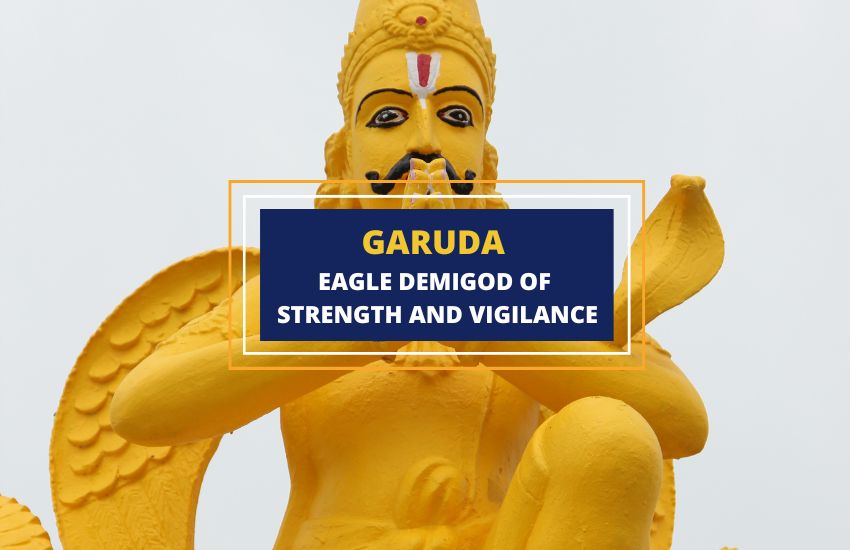
Table of Contents
Garuda is one of the most famous and beloved characters in East Asia. From Hinduism to Jainism and Buddhism, Garuda is worshipped and beloved and is even on the emblems and coats of arms of many modern-day countries such as Thailand, Indonesia, and others.
But who exactly is Garuda? While he is always portrayed as a bird-like demigod, he can be a bit different depending on the religion. So, in this article, we’ll take a closer look at Garuda, as he is seen in the religion that depicted him first – Hinduism.
Who is Garuda in Hinduism?
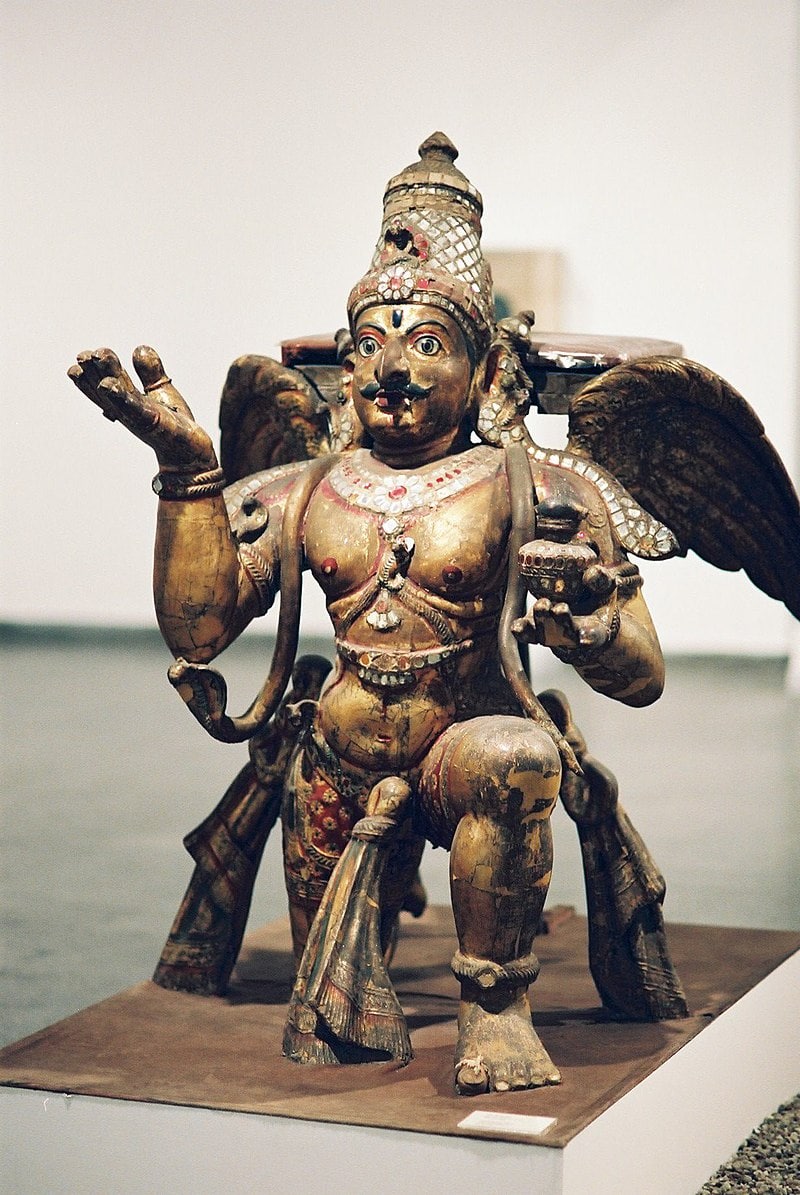
Garuda, the Hindu mythological figure, is an entity that most people have likely seen, yet are unaware of its significance. His image is prominently displayed on the emblems of numerous countries and organizations, as well as on the covers of books and movies, and in various pieces of Eastern art.
Garuda is often depicted in his bird form, which is similar to an eagle or a kite and is frequently utilized as national coats of arms worldwide. When he is not portrayed as a bird, Garuda is typically presented in a harpy-like form of a man with eagle wings, two or four arms, and occasionally a bird’s beak as well.
The reason for Garuda’s unique appearance is that he is a demigod, a divine being, gifted with exceptional strength, the power of flight, and an array of other abilities that vary from one myth to the next.
According to some legends, Garuda is so enormous that he can obscure the sun. With such an impressive presence, it’s no wonder that Garuda continues to captivate the imagination of many, inspiring artists and storytellers across the globe.
The Birth of Garuda
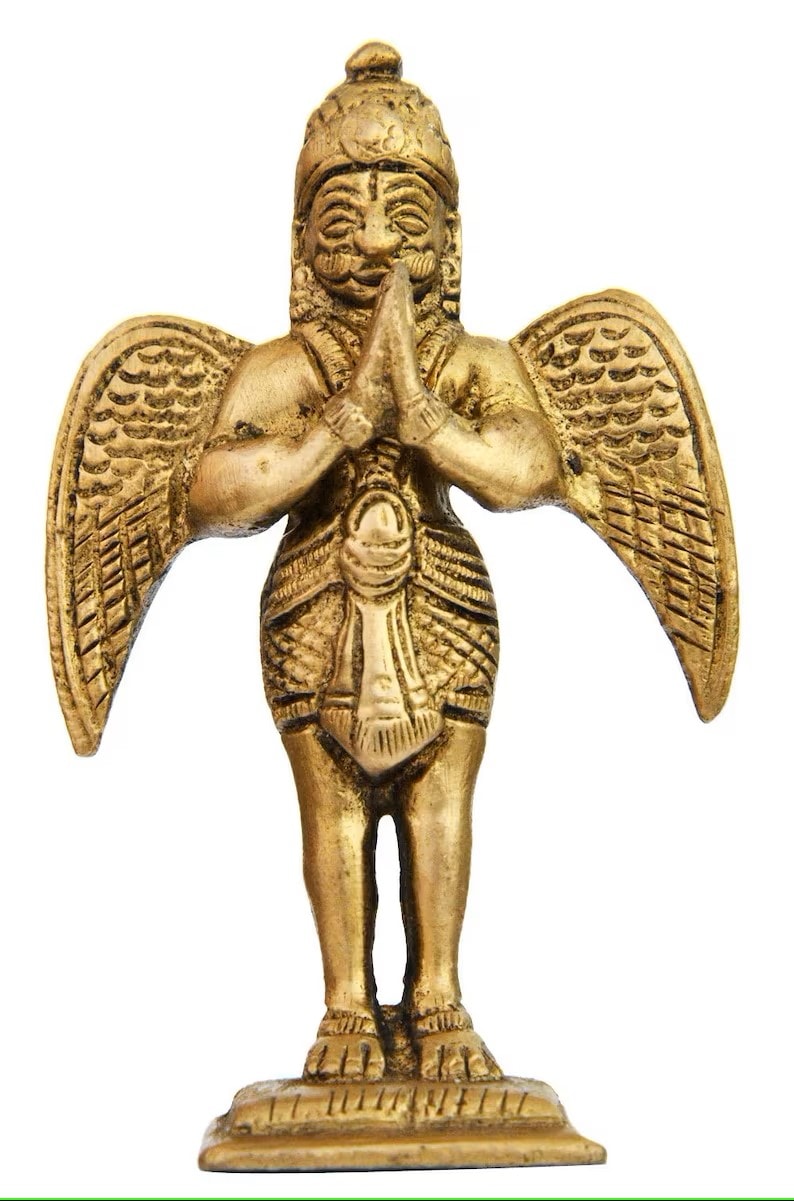
Garuda, the demigod, was born to the goddess Vinata and the revered Vedic sage Kashyapa, who was instructed by Lord Brahma to multiply and expand the world’s population. Kashyapa had multiple wives, including Vinata and Kadru, who were both goddesses and sisters. The two wives requested blessings from Kashyapa, with Kadru asking for one thousand Nāga sons, and Vinata requesting two sons as strong as Kadru’s children.
Kashyapa granted their wishes, and Kadru gave birth to one thousand eggs, while Vinata laid two eggs. However, the eggs took five hundred years to hatch, and when Kadru’s children hatched first, Vinata grew impatient and broke one of her eggs prematurely, giving birth to Aruna, Garuda’s older brother.
Aruna was born fully grown and radiated light like the morning sun, but he chided his mother for her impatience, cursed her to be enslaved by Kadru, and left to become the charioteer of the sun god Surya.
Embarrassed, Vinata did not break the second egg, which eventually hatched into Garuda, who was as magnificent and powerful as promised, even more so than his older brother. This tale showcases the competition and jealousy that can arise between family members and the consequences of impatience.
Garuda’s War Against the Gods
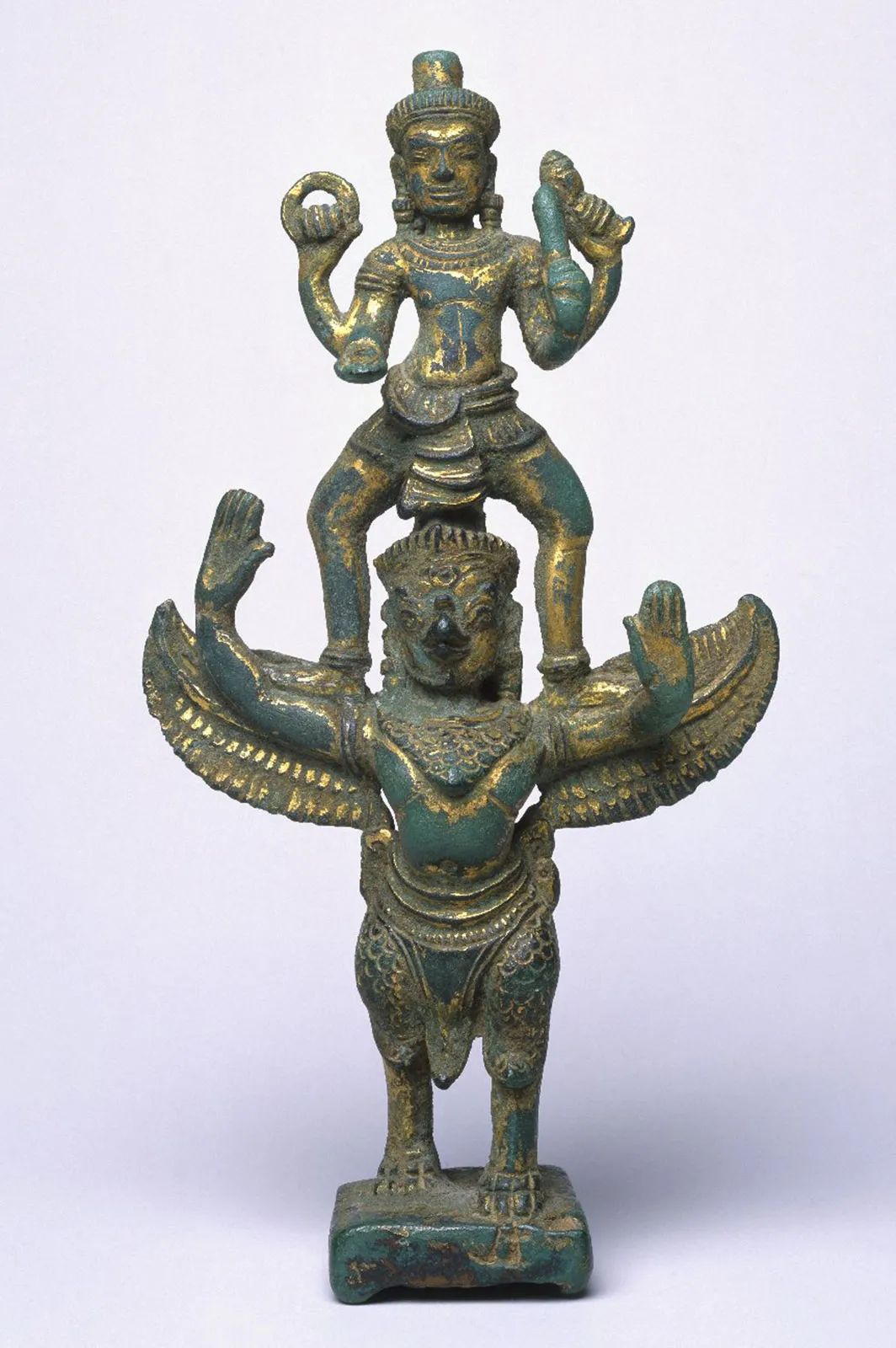
After Vinata lost a bet to her sister Kadru, she became enslaved to Kadru. Garuda, Vinata’s son and a demigod, asked his half-brothers/cousins, Kadru’s one thousand Nāga children, to free his mother. They agreed but asked for the elixir of immortality as payment.
Garuda flew to heaven and defeated the gods, including Indra, to obtain the Amrita nectar vessel. On his way back, Indra tried to stop Garuda from giving the nectar to the serpents as it would cause trouble. Garuda and Indra came up with a plan – the serpents would purify themselves before drinking, giving Jayanta, Indra’s son, the opportunity to steal the nectar.
Garuda would then be free to devour the serpents. The plan succeeded and Garuda became known for his power and loyalty. Vishnu asked Garuda to be his mount, and the two became inseparable, often depicted flying off together. According to some legends, Garuda devoured the serpents and freed his mother, while in others, he simply traded the nectar for his mother’s freedom, leading to snakes’ ability to change their skin and survive.
Garuda in Buddhism, Jainism, and other religions
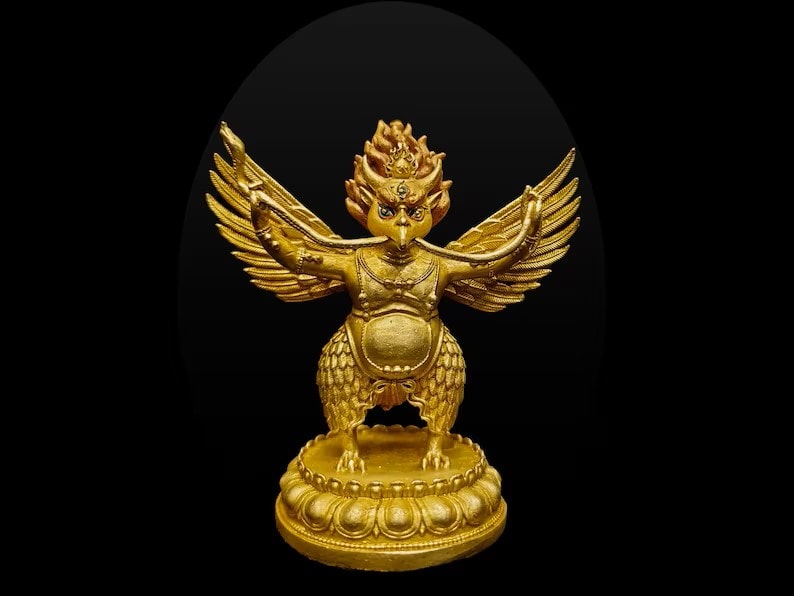
Garuda is a fascinating mythical creature that transcends religious boundaries. While his appearance, stories, and abilities may vary from one belief system to another, he is typically portrayed as a fierce and majestic bird-man who protects humanity from the treacherous Nāga or serpents.
In Buddhism, Garuda is not an individual but a type of golden-winged birdman belonging to the Eight Legions, a group of powerful supernatural beings. In stunning art, they are depicted either sitting in a circle around Buddha, listening to his teachings, or battling serpents, displaying their extraordinary power and bravery.
Similarly, in Jainism, Garuda belongs to the Yaksha class of celestial beings and is regarded as the guardian of Shantinata, a Tīrthaṅkara, or spiritual teacher. With his mighty wings, sharp talons, and extraordinary vision, Garuda embodies the highest virtues of courage, honor, and strength, and serves as a powerful symbol of protection and inspiration to believers across different faiths.
The Symbolism of Garuda
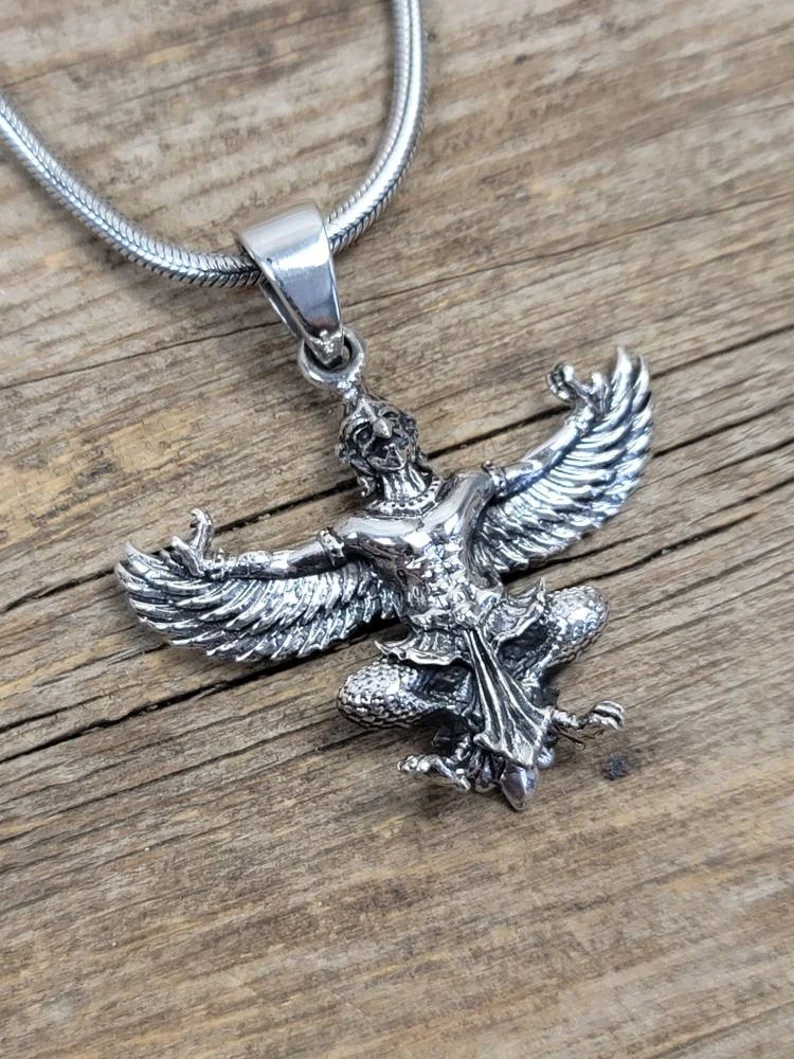
Garuda’s symbolism is as impressive as his mythology. He stands as a majestic symbol of strength, vigilance, and protection. Even though he’s not considered a full-fledged deity, Garuda’s power is undeniable. He’s even powerful enough to defeat the gods themselves when necessary.
Unlike other powerful figures who can let their pride get the best of them, Garuda’s wisdom surpasses all. Whether he’s proudly carrying Lord Vishnu or listening patiently to Buddha’s teachings, Garuda takes it all in stride. His nobility and level-headedness are admirable.
So much so, that Garuda’s image can be found on everything from national flags to military badges, city crests, bank seals, ancient coins, and many more places. Garuda is a symbol of hope, strength, and dignity that has withstood the test of time and will undoubtedly continue to do so.
Wrapping Up
Garuda is a fascinating mythological figure that has captured the imagination of people across East Asia. Despite his widespread popularity in the region, he remains relatively unknown in the Western world.
However, as we have seen, Garuda’s story is one that is full of adventure, heroism, and noble virtues. So, let us take a moment to appreciate this glorious golden-winged demigod, who deserves to be celebrated and admired by people all around the world.








